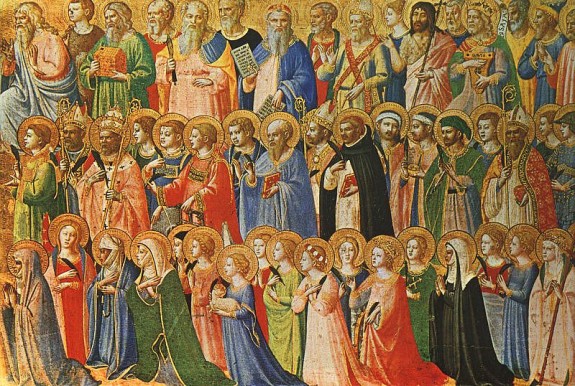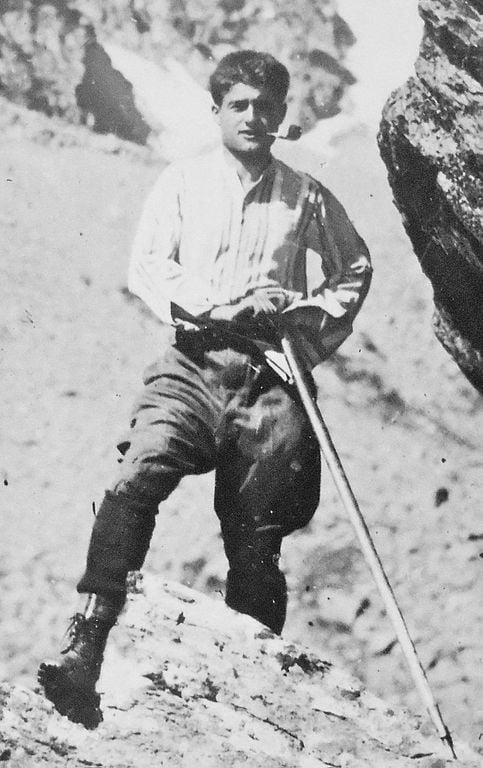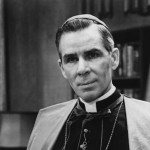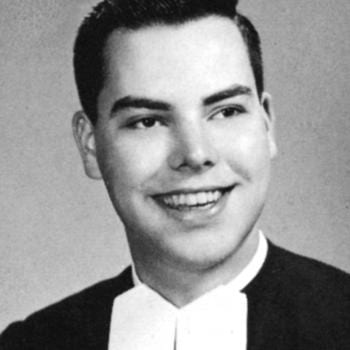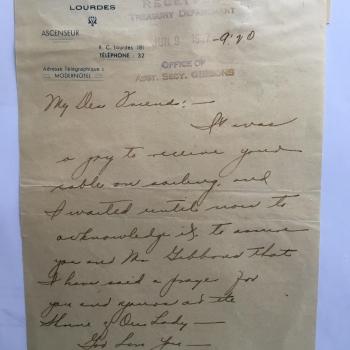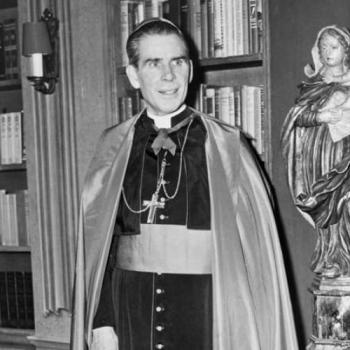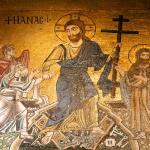When I’m doing a baptism, the first question that is asked in the ritual is: “What name do you give your child?”
Everyone answers that perfectly.
But the second question is trickier.
“What do you ask of God’s church for your child?” The correct answer, of course, is “Baptism.”
Even though we’ve gone over this in the baptism class, sometimes people’s nerves get the best of them. They’re stumped.
So I repeat: What do you ask of God’s church for your child?
A parent will search for the right answer. “Happiness.” “Peace.” “Good health.” “Grace.” All of which are fine.
But it’s not what we’re there for.
Thinking about today’s readings, and the feast we are celebrating, it occurs to me that there might be another way of answering that question.
When the priest or deacon asks “What do you ask of God’s church for your child?” maybe an even better answer is:
“To help them become a saint.”
That says it all. That should be our goal, our desire, our dream—for ourselves and all those we love.
To be saints. To be with God one day in Paradise. What more could anyone want?
The problem is: we don’t usually think this way. We’re too worried about paying the mortgage, driving the kids to soccer practice, finding a good orthodontist in the dental plan, socking away more money in the college fund. Life gets in the way, and we forget what life is about—and what the end of life may bring.
And that’s one reason the Church has placed this feast on our calendar: to make us think this way. To challenge us. To inspire us. To see sainthood as something real and attainable.
But it goes even further than that.
I think there are two aspects of this feast we need to bear in mind.
One is that we honor those who lived lives of heroic virtue, and who showed us how it’s done. Look around this church, in its windows and its shrines, and you will see them: scholars and writers, missionaries and preachers. We pray for their intercession and ask for their companionship.
But the second part may be more important—and more difficult.
It is this: This feast forces us to not just look up—up at the stained glass and plaster and wood figures around us. It also asks us to look within—into our hearts.
What have we done—or what haven’t we done—to be like the saints?
For most of us, All Saints Day tells us that we have our work cut out for us. It shows us both both our fullest potential and where we fall short. And it reminds us of why God made us.
Remember the old Baltimore Catechism? It had this classic question:
“Why did God make you?”
“God made me to know Him, to love Him, and to serve Him in this world, and to be happy with Him for ever in heaven.”
In other words: God made us to become saints.
He made us to become like those we see in the windows and pedestals around us – to be like Anthony and Jude, like Rose and Bernard, like Peter and Ambrose and Padre Pio and Lorenzo Ruiz. These figures that surround us serve to encourage us on our journey. Here is the Communion of Saints, praying for us and with us and challenging us to aim higher and reach further.
They bear silent witness to this humbling fact: we stand on the shoulders of giants—and not just those who lived hundreds of years ago.
The other day my friend the writer Heather King posted online a beautiful and inspiring essay about a trip she made to a church in Rome: San Bartolomeo, Saint Bartholomew. It is an ancient church, but with a new mission—to commemorate the modern martyrs, saints of the 20th century. The church contains chapels with relics. Heather described some of what she saw:
“Chalice, paten and stole of Don Andrea Santoro, Catholic priest missionary in Turkey, killed while he was praying in his parish in Trabzon, on the afternoon of Sunday, February 5, 2006.
“Rosary of Father Alexander Men, Orthodox priest from Moscow, killed in September 1990, as he was on his way to his church to celebrate the Sunday liturgy.”
“The missal of Archbishop Oscar Arnulfo Romero, killed while celebrating the Eucharist on the altar, March 24, 1980.”
And on and on. Heather wrote:
“It’s one thing to visit the Colosseum and contemplate the martyrs who were thrown to the lions 1800 years ago, but these men and women who had been killed for the faith 70, 50, and as recently as eight years ago moved me in a way that was more immediate and more piercing. In fact, the Church has produced more martyrs in the last 100 years than in the previous 1900 put together.”
Certainly, the daily headlines from places of persecution remind us that the age of martyrs hasn’t ended. It goes on. Every day. That is a sobering but important message for all of us who worship here, in this church dedicated to the Queen of Martyrs.
But it also tells us that true greatness, sainthood, knows no particular time period.
Remember this: We live in an age that gave the world Mother Teresa and John Paul and Padre Pio and Dorothy Day and Fulton Sheen.
The 20th century knew men and women like Maria Goretti, Edith Stein, Maximillian Kolbe, Pier Giorgio Frassati.
Who knows what others walk among us now, maybe even praying beside us in this church?
Blessed Pier Giorgio Frassati
We can all aspire to lives that are holy. Lives that are even, as the gospel puts it today, “Blessed.”
This gospel passage, in fact, could stand as a handbook on holiness. If you want to know how to become a saint, it’s all here. Make peace. Be meek. Offer mercy. Live with a clean heart and a poor spirit and a hunger for righteousness. These are the characteristics of the saints. Because, first and foremost, they are also the characteristics of Christ.
I go back to the question I ask at every baptism: what do you ask of God’s church?
What do any of us ask? What do we want above all else for ourselves and those we love?
For myself, there can only be one answer: to become a saint.
We all need prayer and practice to get there. Some of us, a lot more than others.
This morning, let us ask God—and the innumerable saints around us— to make that great work possible.

